Transcription of Physics for Scientists & Engineers, with Modern Physics, 4 ...
1 Copyright 2009 Pearson Education, Inc. 2009 Pearson Education, Inc. This work is protected by United States copyright laws and is provided solely for the use of instructors in teaching their courses and assessing student learning. Dissemination or sale of any part of this work (including on the World Wide Web) will destroy the integrity of the work and is not permitted. The work and materials from it should never be made available to students except by instructors using the accompanying text in their classes. All recipients of this work are expected to abide by these restrictions and to honor the intended pedagogical purposes and the needs of other instructors who rely on these materials.
2 Lecture PowerPoints Chapter 3 Physics for Scientists & Engineers, with Modern Physics , 4th edition Giancoli Copyright 2009 Pearson Education, Inc. Chapter 3 Kinematics in Two or Three Dimensions; Vectors Copyright 2009 Pearson Education, Inc. Units of Chapter 3 Vectors and Scalars Addition of Vectors Graphical Methods Subtraction of Vectors, and Multiplication of a Vector by a Scalar Adding Vectors by Components Unit Vectors Vector Kinematics Projectile Motion Solving Problems Involving Projectile Motion Relative Velocity Copyright 2009 Pearson Education, Inc. 3-1 Vectors and Scalars A vector has magnitude as well as direction.
3 Some vector quantities: displacement, velocity, force, momentum A scalar has only a magnitude. Some scalar quantities: mass, time, temperature Copyright 2009 Pearson Education, Inc. 3-2 Addition of Vectors Graphical Methods For vectors in one dimension, simple addition and subtraction are all that is needed. You do need to be careful about the signs, as the figure indicates. Copyright 2009 Pearson Education, Inc. 3-2 Addition of Vectors Graphical Methods If the motion is in two dimensions, the situation is somewhat more complicated. Here, the actual travel paths are at right angles to one another; we can find the displacement by using the Pythagorean Theorem.
4 Copyright 2009 Pearson Education, Inc. 3-2 Addition of Vectors Graphical Methods Adding the vectors in the opposite order gives the same result: Copyright 2009 Pearson Education, Inc. 3-2 Addition of Vectors Graphical Methods Even if the vectors are not at right angles, they can be added graphically by using the tail-to-tip method. Copyright 2009 Pearson Education, Inc. 3-2 Addition of Vectors Graphical Methods The parallelogram method may also be used; here again the vectors must be tail-to-tip. Copyright 2009 Pearson Education, Inc. 3-3 Subtraction of Vectors, and Multiplication of a Vector by a Scalar In order to subtract vectors, we define the negative of a vector, which has the same magnitude but points in the opposite direction.
5 Then we add the negative vector. Copyright 2009 Pearson Education, Inc. 3-3 Subtraction of Vectors, and Multiplication of a Vector by a Scalar A vector can be multiplied by a scalar c; the result is a vector c that has the same direction but a magnitude cV. If c is negative, the resultant vector points in the opposite direction. V VCopyright 2009 Pearson Education, Inc. 3-4 Adding Vectors by Components Any vector can be expressed as the sum of two other vectors, which are called its components. Usually the other vectors are chosen so that they are perpendicular to each other. Copyright 2009 Pearson Education, Inc.
6 3-4 Adding Vectors by Components If the components are perpendicular, they can be found using trigonometric functions. Copyright 2009 Pearson Education, Inc. 3-4 Adding Vectors by Components The components are effectively one-dimensional, so they can be added arithmetically. Copyright 2009 Pearson Education, Inc. 3-4 Adding Vectors by Components Adding vectors: 1. Draw a diagram; add the vectors graphically. 2. Choose x and y axes. 3. Resolve each vector into x and y components. 4. Calculate each component using sines and cosines. 5. Add the components in each direction. 6. To find the length and direction of the vector, use: and.
7 Copyright 2009 Pearson Education, Inc. 3-4 Adding Vectors by Components Example 3-2: Mail carrier s displacement. A rural mail carrier leaves the post office and drives km in a northerly direction. She then drives in a direction south of east for km. What is her displacement from the post office? Copyright 2009 Pearson Education, Inc. 3-4 Adding Vectors by Components Example 3-3: Three short trips. An airplane trip involves three legs, with two stopovers. The first leg is due east for 620 km; the second leg is southeast (45 ) for 440 km; and the third leg is at 53 south of west, for 550 km, as shown.
8 What is the plane s total displacement? Copyright 2009 Pearson Education, Inc. 3-5 Unit Vectors Unit vectors have magnitude 1. Using unit vectors, any vector can be written in terms of its components: VCopyright 2009 Pearson Education, Inc. 3-6 Vector Kinematics In two or three dimensions, the displacement is a vector: Copyright 2009 Pearson Education, Inc. 3-6 Vector Kinematics As t and r become smaller and smaller, the average velocity approaches the instantaneous velocity. Copyright 2009 Pearson Education, Inc. 3-6 Vector Kinematics v vThe instantaneous acceleration is in the direction of = 2 1, and is given by: vCopyright 2009 Pearson Education, Inc.
9 3-6 Vector Kinematics Using unit vectors, Copyright 2009 Pearson Education, Inc. 3-6 Vector Kinematics Generalizing the one-dimensional equations for constant acceleration: Copyright 2009 Pearson Education, Inc. 3-7 Projectile Motion A projectile is an object moving in two dimensions under the influence of Earth's gravity; its path is a parabola. Copyright 2009 Pearson Education, Inc. It can be understood by analyzing the horizontal and vertical motions separately. 3-7 Projectile Motion Copyright 2009 Pearson Education, Inc. 3-7 Projectile Motion The speed in the x-direction is constant; in the y-direction the object moves with constant acceleration g.
10 This photograph shows two balls that start to fall at the same time. The one on the right has an initial speed in the x-direction. It can be seen that vertical positions of the two balls are identical at identical times, while the horizontal position of the yellow ball increases linearly. Copyright 2009 Pearson Education, Inc. 3-7 Projectile Motion If an object is launched at an initial angle of 0 with the horizontal, the analysis is similar except that the initial velocity has a vertical component. Copyright 2009 Pearson Education, Inc. 3-8 Solving Problems Involving Projectile Motion Projectile motion is motion with constant acceleration in two dimensions, where the acceleration is g and is down.
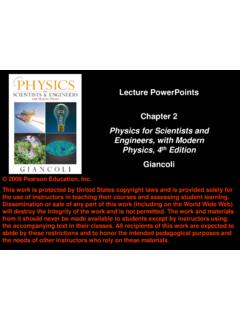
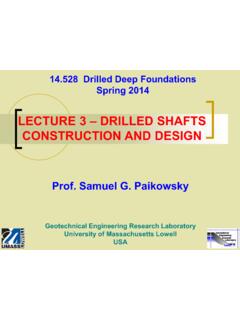
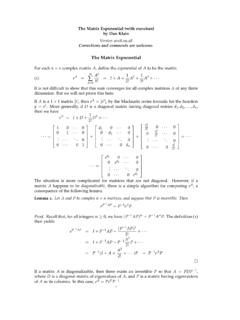

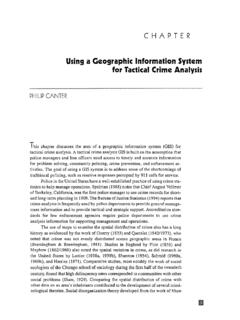
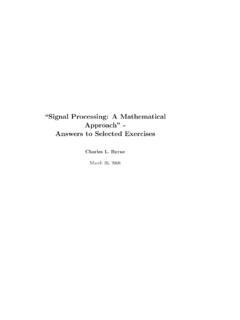
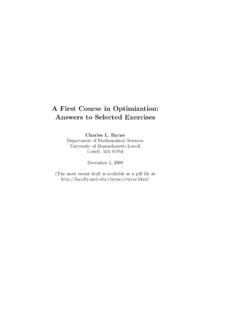
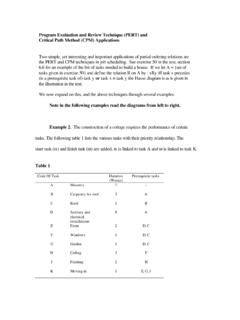

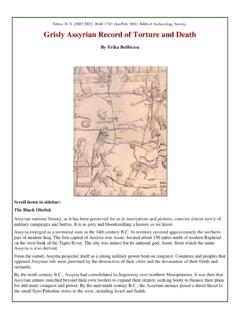
![Modern Physics [Phys207] - Missouri University of Science ...](/cache/preview/3/6/b/5/5/5/a/7/thumb-36b555a703faa2c10b5d9776ce7cbc27.jpg)







